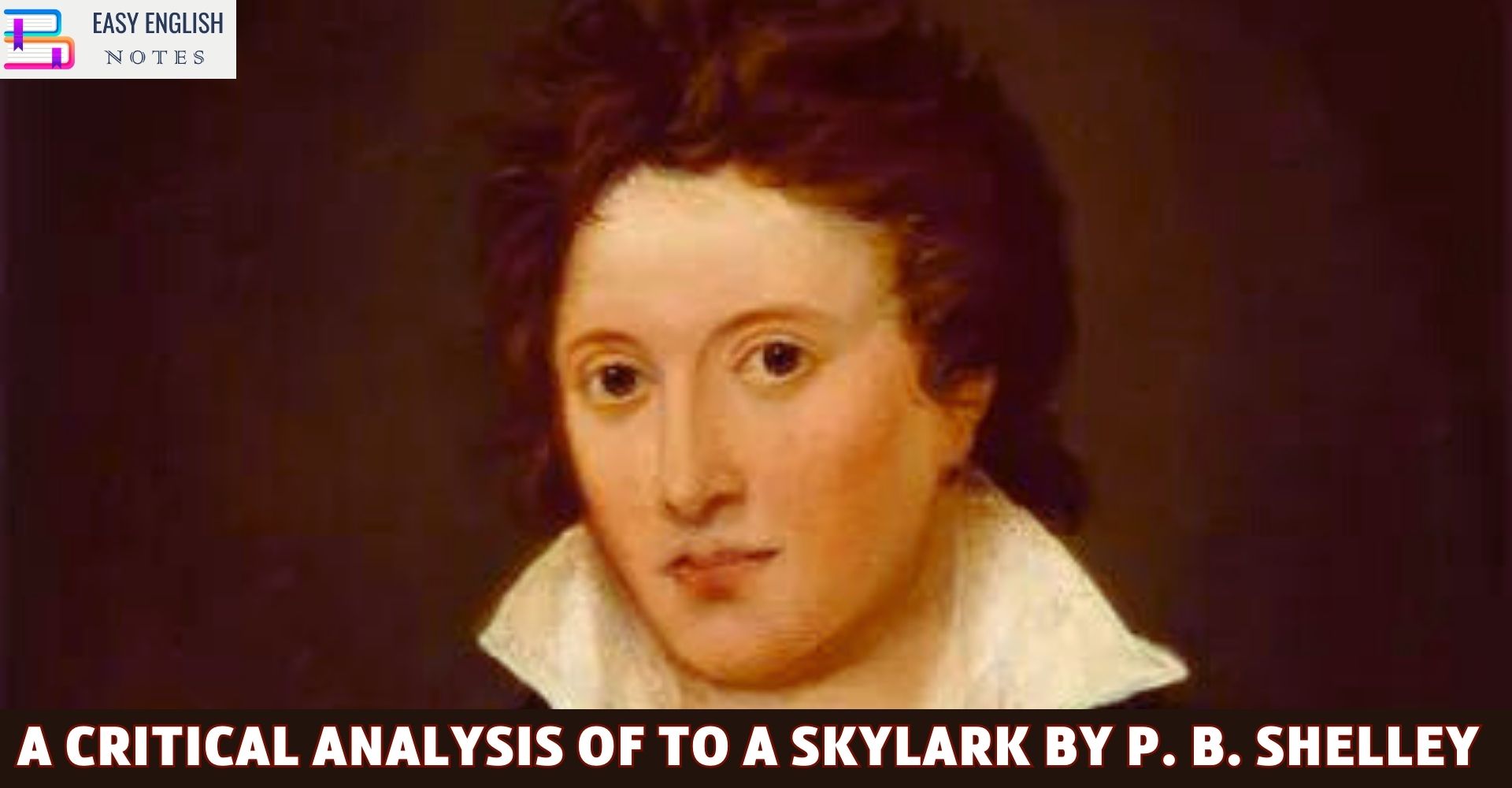This remarkable poem stands as one of the most sublime examples of English lyricism. Wordsworth himself regards it as the pinnacle of his poetic genius, encapsulating the essential qualities that define Shelley’s verse: his soaring idealism, intense emotions, vibrant imagery, splendid colors, and unmatched melodic beauty. The inspiration for this lyric masterpiece arose from the ethereal song of a skylark that graced the poet’s ears on a tranquil summer evening. The bird’s melodic strains stirred the poet’s soul to its depths, evoking a profound response.
From the very beginning, Wordsworth idealizes the skylark as a tangible creature, a being of flesh and blood, rather than an abstract concept. The bird’s song, to him, is an invisible melody, an intangible joy that surpasses the boundaries of the physical world. Unlike Shelley, whose imagination transcends the bird’s mortal existence, perceiving it as an embodiment of everlasting beauty and joy, Wordsworth acknowledges its mortality, recognizing it as a symbol of the eternal principles that have permeated the universe throughout time. The bird’s upward flight becomes a powerful symbol of the poet’s limitless inspiration, a manifestation of Shelley’s own essence projected onto the celebrated creature. Yet, the skylark represents something even greater—a mystic philosopher endowed with intuitive perception of the enigmatic aspects of life and death, a perception denied to mere mortals. It is from this clarity of thought that the bird’s sweet song emanates, stemming from a profound understanding. Thus, Shelley idealizes the bird through the intensity of his imagination. While not everyone may fully embrace the poet’s idealized vision of the skylark, the sheer poetic beauty of the lyric is irresistible. The splendid images in which Shelley describes the bird—a poet, a high-born maiden, and more—possess a rich palette of colors and apt suggestions that have few parallels in English poetry. As Courthope astutely observed, “If greatness in poetry consisted of a succession of dazzling images and a rapid flow of splendid verse, Shelley would be entitled to almost the very first place in English literature.” These images leave the reader breathless as they attempt to grasp their profound essence. Just as one becomes captivated by the beauty of an image, the poet swiftly transports them to another, even more enchanting than the previous one. The freshness and delicacy of these images are both startling and awe-inspiring.
Also Read :
- Compare Hamlet with Macbeth, Othello and other Tragedies
- “The Pardoner’s Tale” is the finest tale of Chaucer
- Prologue to Canterbury Tales – (Short Ques & Ans)
- Confessional Poetry – Definition & meaning
In terms of musical quality, the poem stands as a testament to Shelley’s mastery. Like the skylark’s song it celebrates, the poem itself becomes a grain of melody, a veritable torrent of music. Words and phrases flow effortlessly from the poet’s lips, mirroring the ease and charm of the bird’s song. The rhythmic beat of the four short verses followed by a long Alexandrine seems to echo the very pulsation of the bird’s wings in the ethereal realm of the air. No poet other than Shelley has been able to craft such admirable flowing verse with such profound ease and spontaneity.
Truly, it is a marvelous poem, evoking the very essence of those quivering wings. As a tribute to the bird, it rightfully claims a supreme place in the realm of literature. Few poets have achieved such a wondrous fusion between the poet’s spirit and the bird’s essence. The skylark soars, releasing profuse strains of art so effortlessly crafted that they appear unpremeditated. It ascends until the earth becomes an imperceptible speck, lost amidst a cloud of fire—beautiful yet intangible, floating and traversing like an ethereal joy. There exists an indescribable curve of beauty emerging from its flight towards an unknown realm, a realm filled with elusive suggestions and fleeting thrills. Its wings pulsate with the poet’s unquenchable thirst for eternal beauty. Thus, the poem embodies a thoroughly romantic quest for the unknown, an attempt to transcend the sordid realities of life.
This lyric poem sheds fascinating light on the characteristics of Shelley himself. It serves as a vivid portrayal, with each line reflecting the man behind the pen, and the bird becoming a mere expression of the poet’s innermost self. The poet’s thoughts, his longing for ideal beauty, his melancholy—they all find a mirror in this poem. The poet envies the profound happiness of the skylark, for his own personal life remains marked by unhappiness:
“Teach me half the gladness
That thy brain must know.”
In summary, this unique poem shines with luminosity that captivates the senses. Its rhythmic movement, profound imagination, and exquisite expressions combine to create an enduring song for generations to come. It awakens the active power of imagination, adorned with radiant imagery, and ascends to the heights of completeness and sustained melody, representing the pinnacle of lyrical excellence.
In conclusion, this unique poem is marked by its striking luminosity. The rhythmic movement of its verses, the depth of imagination it encompasses, and the beauty of its expressions combine to create a lasting and memorable song for all ages to come. It awakens the active power of the imagination, adorning itself with radiant imagery, and ascends to the heights of completeness and sustained melody, representing the pinnacle of lyrical excellence.
PLEASE HELP ME TO REACH 1000 SUBSCRIBER ON MY COOKING YT CHANNEL (CLICK HERE)











